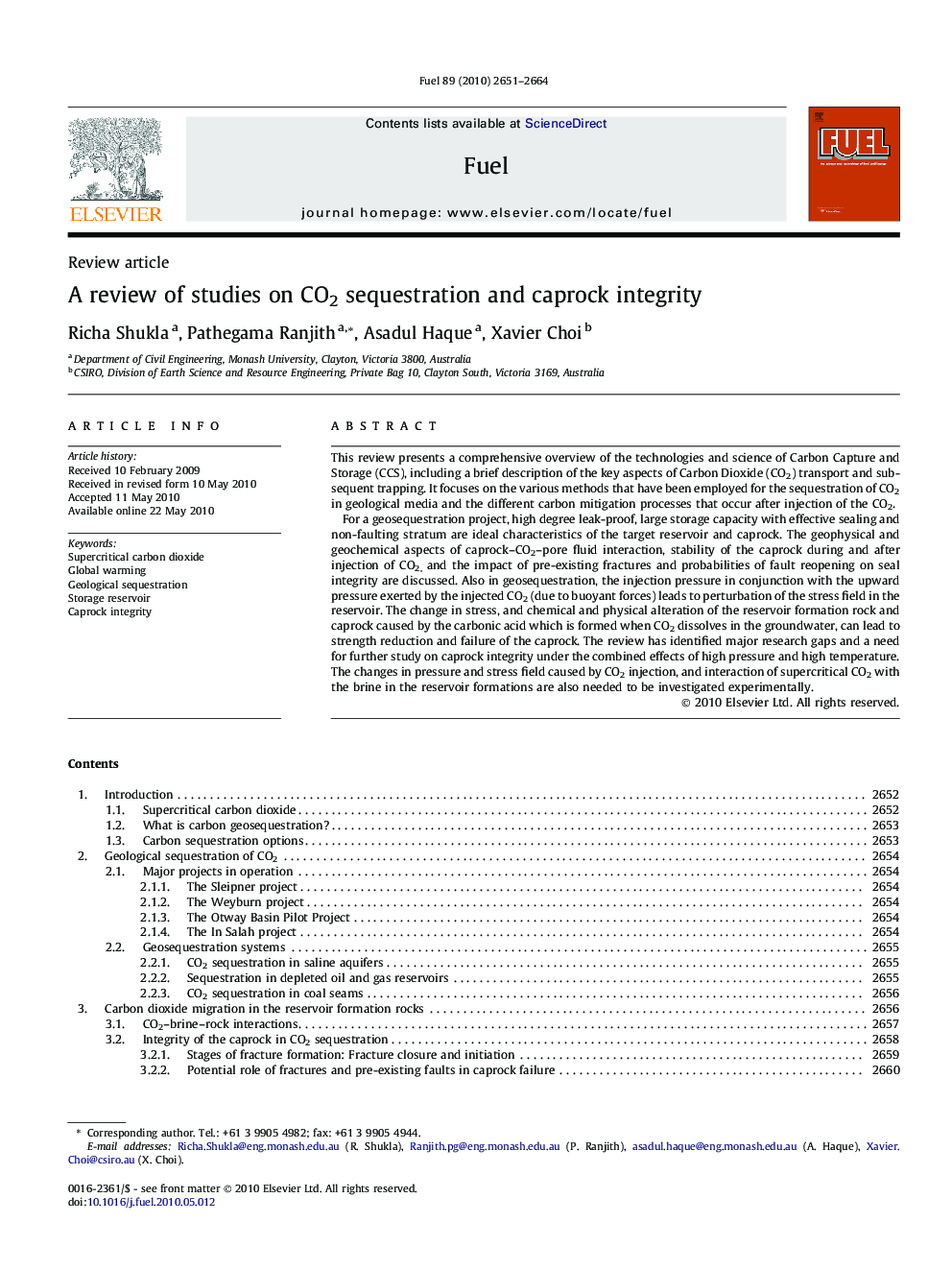| Article ID | Journal | Published Year | Pages | File Type |
|---|---|---|---|---|
| 206528 | Fuel | 2010 | 14 Pages |
This review presents a comprehensive overview of the technologies and science of Carbon Capture and Storage (CCS), including a brief description of the key aspects of Carbon Dioxide (CO2) transport and subsequent trapping. It focuses on the various methods that have been employed for the sequestration of CO2 in geological media and the different carbon mitigation processes that occur after injection of the CO2.For a geosequestration project, high degree leak-proof, large storage capacity with effective sealing and non-faulting stratum are ideal characteristics of the target reservoir and caprock. The geophysical and geochemical aspects of caprock–CO2–pore fluid interaction, stability of the caprock during and after injection of CO2, and the impact of pre-existing fractures and probabilities of fault reopening on seal integrity are discussed. Also in geosequestration, the injection pressure in conjunction with the upward pressure exerted by the injected CO2 (due to buoyant forces) leads to perturbation of the stress field in the reservoir. The change in stress, and chemical and physical alteration of the reservoir formation rock and caprock caused by the carbonic acid which is formed when CO2 dissolves in the groundwater, can lead to strength reduction and failure of the caprock. The review has identified major research gaps and a need for further study on caprock integrity under the combined effects of high pressure and high temperature. The changes in pressure and stress field caused by CO2 injection, and interaction of supercritical CO2 with the brine in the reservoir formations are also needed to be investigated experimentally.
